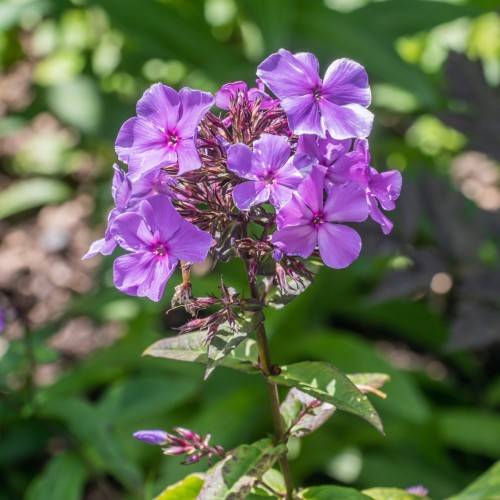
garden phlox
Phlox paniculata 'Shockwave'
Also Known As - border phlox,common phlox,common phloxCycle:
Herbaceous Perennial
Watering:
Average
Hardiness Zone:
4 - 8
Flowers:
Flowers In Summer
Sun:
Full sun, Part sun/part shade
Soil:
Rocky , gravelly , dry, Well-drained
Fruits:
Fruits In Autumn Ready In
Leaf:
Yes
Growth Rate:
High
Maintenance:
Moderate
Drought Tolerant:
Yes
Care Level:
Medium
watering
Garden phlox should be watered thoroughly and deeply once or twice a week, depending on weather conditions. In hot summer months, it may need to be watered up to 3 times a week. During cooler months, it may need less water, so be sure to monitor the soil for dryness. To keep the soil evenly moist, water slowly over a period of time at the base of the plant. Avoid wetting the foliage to prevent fungal disease.
sunlight
Garden phlox prefers full sun to partial shade with the latter generally providing the best blooms. It's important to keep in mind that the more sun garden phlox receives, the more water it will need to ensure the plant stays hydrated. For best results, the plant should receive at least 6 hours of direct sun each day, preferably in the morning hours. In the heat of the day, the leaves may start to brown and the blooms could start to wilt. In hotter regions, a light afternoon shade could be beneficial. If garden phlox is planted in a shady location, the blooms could become fewer and sometimes less vibrant.
pruning
Garden phlox (Phlox paniculata 'Shockwave') should be pruned annually in the early spring, before bloom or growth begins. Begin pruning by removing any dead branches and stems, cutting them off at the base of the plant. Next, cut back the stems of the phlox by 1-third to 1-half of their length. You will need to remove any extra shoots that do not fit the desired shape of the plant; remove these shoots at the base of the plant. Finally, pinch off any flower buds that are visible. Be sure to wear gloves to protect your hands from any prickles the plant may have.
